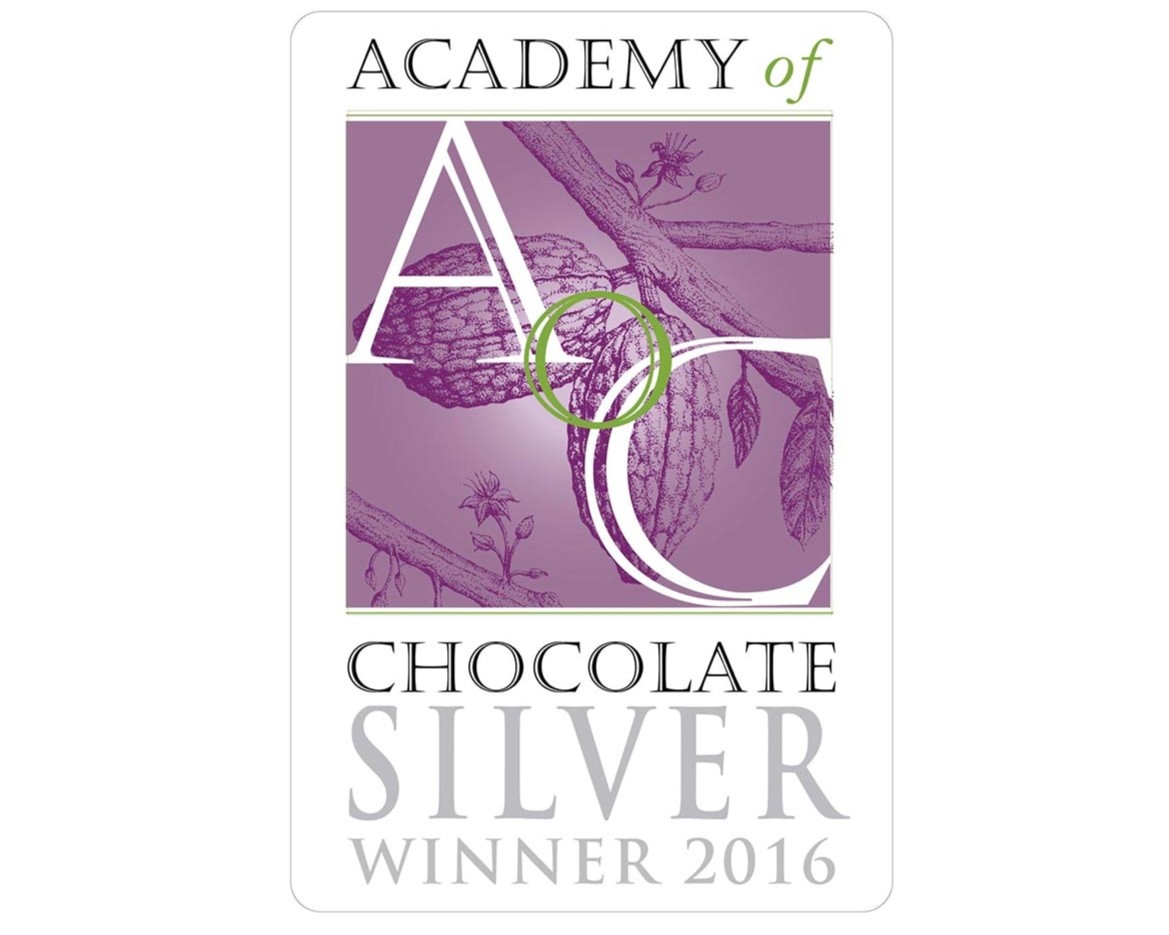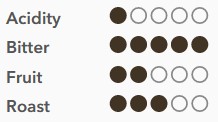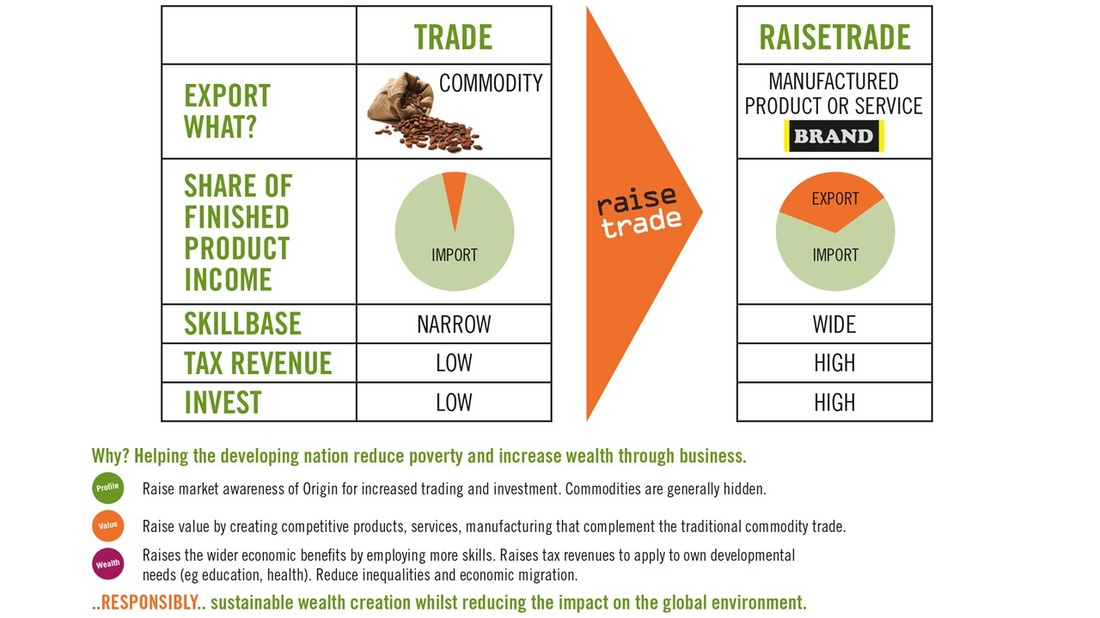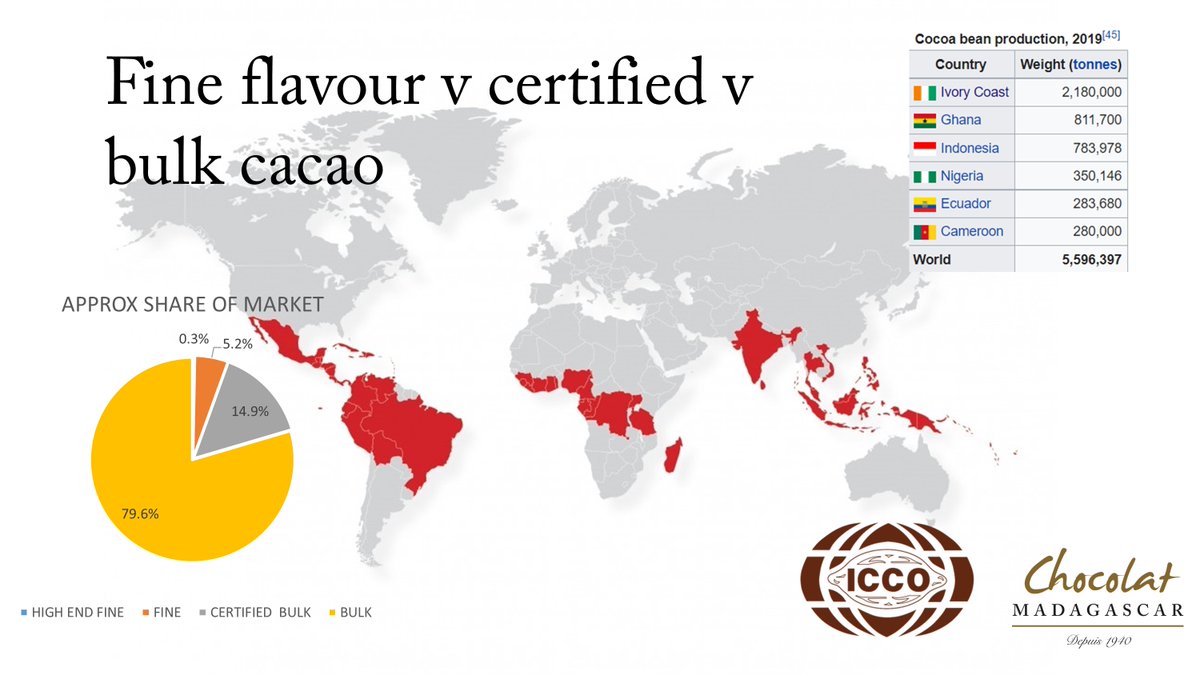Organic Dark Baking Chocolate - 100% Cocoa Ecocert organic, non-alkalized, and rich in antioxidants - 10 × 100 g

For your purchase, we will credit you:
+1102 Bodů do Bonusového programuWhy buy
Luxury 100% BIO dark chocolate with intense flavour
Chocolat Madagascar 100% Organic Dark Chocolate is a luxurious dark chocolate made exclusively from organic cocoa beans grown in the Grand Cru de Sambirano region of northwest Madagascar.
Chocolate impresses with its intense and rich taste with notes of forest fruits, citrus and raisins, complemented by the subtle aroma of quality cocoa butter. With no added sugar, it offers natural sweetness and an unmistakable fullness of flavour.
Experience the pure and authentic taste of Madagascan cocoa in this premium chocolate that perfectly represents the rich flavours and traditions of Madagascar.
Balanced taste and premium ingredients
100% cocoa solids ensure an intense taste experience without compromise. The chocolate contains only the best of the cocoa bean, with no added sugar, chemical additives or preservatives.
Thanks to its fine texture with a particle size below 20 µm, the chocolate is easy to temper and ideal for pastry arts, baking and culinary experiments.
100% natural and without chemical processing
This chocolate is made without alkalization and added flavors, which preserves its natural properties. The rich content of antioxidants (flavanols) and fibre makes it not only a culinary but also a healthier experience.
Promoting local production and sustainability
The cocoa beans used to make this chocolate come from the Sambirano region, which, thanks to its unique microclimate and fertile soil, produces cocoa with unique flavour notes.
The beans are processed directly in Madagascar, ensuring freshness of the product and maximum economic benefit for local farmers.
Chocolat Madagascar is committed to supporting sustainability and local communities, making this chocolate not only a gourmet but also an ethical delight.
International awards
-
Academy of Chocolate Awards
May 2016: silver in the category "Organic Fine Dark 100% Cocoa".

This silver medal recognises the quality of Chocolat Madagascar 100% dark chocolate, made from certified organic cocoa. The award highlights the balance, texture and flavour complexity of this chocolate.
Although it did not win a gold medal, the silver award underlines its uniqueness and confirms its position among the best organic chocolates in the competition.
Social networks
Follow Chocolat Madagascar on our Instagramwhere you can find out lots of information and interesting facts, as well as get inspired by regular chocolate recipes.
Read more on this topic
- Taste real chocolate from Chocolat Madagascar
- How to prepare the best hot chocolate
- Discover low carb or more energy, less sugar
- Vegetarian and vegan diet
- What to take with you on a hike?
Chocolat Madagascar - the only brand of its kind in the world
What makes Chocolat Madagascar unique is its very special tree-to-bar production model, which includes every step of production - from growing the cocoa trees, fermenting and drying the beans to making the luxury chocolate - exclusively in Madagascar.
This approach ensures that the entire value of the production chain remains in the country of origin. The brand originated under the banner of Chocolaterie Robert, which was founded in 1940 by a French couple from Reunion.
Since 1977, however, the company has been owned by a local Malagasy family, Ramanandraibe, who maintain the tradition of producing quality chocolate while supporting the local community.
This local ownership and commitment to producing directly in the country of origin goes beyond even the most ethical and sustainable global brands, making a direct and lasting positive impact on the economy and people of Madagascar.
Chocolate Madagascar versus commercialism
Unlike large commercial producers such as Cadbury, Lindt or Nestlé, who source cocoa from around the world and process it in remote factories, Chocolat Madagascar focuses on local production.
Big brands often combine cocoa beans from different regions to create a uniform taste, which reduces the diversity of flavour profiles.
Chocolat Madagascar, on the other hand, preserves the unique flavour profiles of Madagascar's cocoa, grown in the fertile Sambirano Valley, and builds on sustainability, support for local communities and environmental responsibility.
Chocolat Madagascar and France
Chocolat Madagascar is building a reputation among chocolate connoisseurs in France, which is considered the centre of chocolate craftsmanship. The historical roots of the brand go back to Chocolaterie Robert, which was founded in 1940.
Today, Chocolaterie Robert has a shop at 16 avenue Félix Faure in Paris, for example, and the brand's chocolates are also available in specialist shops throughout France.
The brand has gained recognition not only among customers but also among professionals - for example, awards at the International Chocolate Awards in London or mentions in the French press, such as L'Écho du Sud, which praise the quality and authenticity of their chocolates.
Thanks to its tree-to-bar model and the unique flavour profiles of Madagascar cocoa, Chocolat Madagascar appeals to discerning French customers looking for luxury and sustainable products.
Chocolat Madagascar and competing tree-to-bar brands
While there are other brands, such as Pacari in Ecuador and the Grenada Chocolate Company, that produce chocolate close to where their cocoa is grown, none of them operate with the level of integration, local ownership and focus on luxury that Chocolat Madagascar does.
This commitment to every stage of production on-site in Madagascar makes Chocolat Madagascar a truly unique brand in the global chocolate industry, a pioneer of high quality, indigenously specific confectionery and a shining example of sustainable chocolate production that has a positive impact on the local community and the environment.
Technical information
| Feature | Detail |
|---|---|
| Palette | Notes of forest fruits, citrus and raisins. Naturally reduced bitterness. A long conclusion. |
| Freshness and processing | It stays fresher longer, freshly processed in Madagascar. |
| Format | 100 g x 10 tablets. |
| Certification | Ecocert - ORGANIC. |
| Texture and taste | Fine structure < 20 µm, delicate cocoa taste (Criollo-Trinitario-Forastero). |
| Origin of cocoa | Terroir Grand Cru de Sambirano, northwest Madagascar. |
| Ingredients | No added sugar, no added flavours. |
| Nutritional benefits | High in fiber, flavanols/antioxidants (ORAC). |
| Retrieved from | No chemical treatment, no alkalisation. Preserving natural flavors. |
| Suitable for vegans | Ano. |
| Usage: | Chocolate shops, confectionery, beverages, pastries, toppings, etc. |
| Temperature specifications | Melting point: 45–50 °C. Crystallization: 27 °C. Application: 32–33 °C. |
| Package dimensions | 180 mm x 180 mm x 50 mm. |
| Net weight | 1 kg (10 x 100 g). |
Ingredients
Grand Cru de Sambirano beans - cocoa solids min. 100%.
Nutritional values
| Nutritional values per 100 g | Quantity |
|---|---|
| Energy | 2466 kJ / 596 kcal |
| Fat | 48 g |
| - of which saturated fatty acids | 29 g |
| Total carbohydrate content including fibre | 32 g |
| - of which sugars | 0,5 g |
| Protein | 14 g |
| Salt | 0,03 g |
Storage of genuine fine chocolate
In order for your fine chocolate to retain its perfect taste, texture and appearance, there are a few simple but important storage rules to follow:
- Keep out of direct sunlight.
- Constant temperature: between 12-20°C (57.2-68°F).
- Odourless: store in an airtight container or an environment free of foreign odours.
- Low humidity: relative humidity of maximum 70%.
Why does storage matter?
In Madagascar they have grown the best cocoa for you and made it as fresh as possible into fine chocolate. Thanks to transport in controlled conditions - at the ideal temperature and without unwanted odours - the chocolate arrived in perfect condition to distributors around the world.
But now it's up to you to make sure the chocolate retains its freshness and quality at home.
The main risks of poor storage
- Temperature: chocolate melts easily because the body temperature is around 37°C. If stored at temperatures above 75°F (24°C), the cocoa butter may melt and separate. The result is a whitish coating on the surface (called fatty efflorescence). Although the chocolate remains edible, its appearance and texture are no longer ideal.
- Sunlight and air: these factors can cause oxidation, which changes the taste of milk and white chocolate. Dark chocolate is more resistant due to its higher antioxidant content and, if stored properly (in an airtight container at 14-20°C), its taste can even improve with time - similar to a good wine.
- Foreign smell: Cocoa butter, the base fat of the cocoa bean, has the ability to easily absorb odors from the environment. To preserve the original flavour and integrity, keep chocolate in an airtight container and away from strongly flavoured foods or objects.
- Humidity: High humidity (above 70%) can harm chocolate. When chocolate comes into contact with water, the dry cocoa and sugar particles become wet, stick together and form a gritty and rough texture that destroys its original smoothness.
By following these rules, your fine chocolate will retain its exceptional appearance, taste and texture, just as we have prepared it for you in Madagascar. 🍫
Making tree to bar chocolates
Chocolat Madagascar produces its chocolates using the tree-to-bar method, which means that the entire process - from harvesting the cocoa beans, to fermentation and drying, to chocolate production and packaging - takes place entirely in Madagascar. This approach ensures maximum freshness of the cocoa beans, which has a positive effect on their intense flavour and nutritional value.
The cocoa beans come from the Grand Cru de Sambirano region, which, thanks to its unique terroir, gives the chocolates a full and balanced flavour without unpleasant bitterness. Thanks to this, there is no need to add additional flavourings or chemically modify their taste by alkalisation.
The tree-to-bar method also supports the local economy, as all profits stay in Madagascar, where they help create jobs and improve the living conditions of local communities. Chocolat Madagascar refers to this ethical approach as "raise trade", which takes the conventional concept of fair trade to a higher level.
In addition, this process significantly reduces the carbon footprint as the cocoa beans are processed on site and do not need to be transported abroad, saving fuel. This makes Chocolat Madagascar not only a leader in quality, but also a model for organic and ethical chocolate production.
What is raise trade
Raise trade is an innovative concept that changes the rules of the traditional cocoa and chocolate trade. Unlike the conventional model, where most of the cocoa beans are exported to richer countries for processing, the raise trade ensures that the entire production process - from harvesting the beans, to fermentation and drying, to chocolate production and packaging - takes place in the country of origin.
This approach allows more of the economic value to remain in the developing country, bringing long-term benefits to the local economy.
While the concept of fair trade seeks fairer prices for cocoa, it has its limits. Fair trade often only ensures a better farmgate price for farmers, but cocoa is still processed in rich countries, meaning that more than 97% of the economic value remains outside the country of origin.
Raise trade overcomes this problem by preserving added value where cocoa grows and supporting the development of local communities. As a result, farmers and workers benefit not only from the cultivation but also from the processing of cocoa beans, which significantly improves their standard of living.
Chocolat Madagascar pioneered this approach and has been applying the raise trade model directly in Madagascar since 1940. This label ensures that over 70% of the value of the chocolate stays on the island, creating jobs, promoting education and skills development in artisan chocolate production.
As a result, their chocolates not only reflect the authentic flavour profiles of Madagascan cocoa, but also minimise the ecological footprint as the cocoa beans are not processed abroad.
Raise trade is thus not only about economic justice, but also about sustainability and ethics. With this approach, Chocolat Madagascar is taking the concept of fair trade to the next level, which it calls raise trade - real change for local communities and the global chocolate industry.
Child slavery, pesticides and fraud
Children and slavery
You may not have known that by buying supermarket chocolate from conglomerates such as Nestlé, Unilever or Kraft, you may be indirectly supporting child labour or even slavery in the areas where cocoa is grown, often in Africa and other developing countries.
Cheap chocolate means not only lower quality, but also unethical practices where farmers receive minimum farmgate prices and profits end up with wealthy corporations.
Pesticides
Cocoa cultivation in West Africa, particularly in countries such as Côte d'Ivoire and Ghana, is associated with intensive use of pesticides. Many small farmers apply chemicals without adequate protection, posing health risks to themselves and the environment.
Inadequate training and limited access to safer alternatives lead to excessive and inappropriate use of these substances. Moreover, due to low farm gate prices for cocoa, farmers often do not have the means to invest in more environmentally friendly cultivation methods. This situation is contributing to land degradation, water pollution and threats to biodiversity in the region.
Look at the back of your chocolate wrapper to find out who really makes it and who your money goes to. Cheap chocolate often encourages low standards, mass production and huge marketing budgets, while the farmers who grow the cocoa remain in poverty.
Fraud in local production of bean-to-bar chocolates
When choosing quality chocolate, it is important to be informed about the ingredients and production processes. Some manufacturers who present themselves as"bean-to-bar" may use cheap ingredients such as soy lecithin, which serves as an emulsifier and improves the fluidity of the chocolate during production.
Soya lecithin is a commonly used emulsifier in chocolates, but its use can be problematic for several reasons. GMO soybeans, from which lecithin is extracted, are often grown in monocultures, which has a negative impact on biodiversity and contributes to deforestation and land degradation, especially in South American countries.
In addition, GMO soy raises concerns among consumers who prefer products without genetic modifications. Soya lecithin can also affect the quality of chocolate as it is cheaper than natural emulsifiers such as cocoa butter and can be used as a substitute for higher quality ingredients.
In addition, soy is a common allergen, which may pose a problem for some consumers. These factors make soy lecithin a controversial ingredient in quality chocolate.
Qualitybean-to-bar producers focus on controlling the entire production process, from the growing of the cocoa to the final product, to ensure high quality and ethical standards.
Some manufacturers who present themselves as'bean-to-bar' may in fact use industrially produced chocolate as the main ingredient for their products, which may affect the quality and authenticity of their products.
To verify the quality and authenticity of the chocolate, it is recommended to check the ingredients on the packaging, look for certifications and awards from reputable organizations and inquire about the brand' s manufacturing practices.
Producer transparency and openness are key to ensuring a quality and ethical product.
How fine chocolate is doing on the world market
In the chart below you can see the market share difference between:
- High End Fine Flavour Chocolate (blue) - the highest quality with an emphasis on taste and sustainability - not even visible.
- Fine chocolate (orange colour) - represents the true pinnacle of quality, occupying only a minimal share of the market, which shows how rare and exceptional these products are.
- Certified meat chocolate - admittedly with some ethical certification, but still focused on volume.
- Ordinary meat chocolate, which makes up the majority of the market and is available at very low prices.
By choosing chocolate from brands like Chocolat Madagascar, you are not only supporting ethical production, but also local farmers who work very hard and deserve a fair reward.
This chocolate not only offers the true taste of cocoa beans, but also contributes to sustainable agriculture and economic development. Your money will not go into the accounts of big corporations or expensive TV ads, but directly where it can make a difference.
Thank you for supporting quality, ethics and sustainability in your choice of chocolate. Your choice may have a bigger impact than you think.
Additional parameters
| Category: | Chocolate for cooking |
|---|---|
| EAN: | 715547846485 |
| Obsah: | 10 x 100 g tabulek |
| Proč koupit: | Jediná čokoláda v ČR z Madagaskaru, která je tzv. tree to bar. V praxi to znamená, že je celá vyrobena a zabalena v místě pěstování. |
| Vhodné pro: | Bez lepku-Lactose Free-Soy Free-GMO Free-Vegan-Low Carb-Těhotné-Kojící |
| Země původu: | Údolí Sambirano, Madagaskar |
| Výrobce: | Chocolat Madagascar |
| The item has been sold out… | |
About Chocolate Madagascar
Growing fine cacao and freshly crafting dark chocolate in Madagascar
Growing fine rare cacao and freshly crafting into fine milk chocolate in Madagascar
Growing rare fine cacao and freshly crafting into fine white gold chocolate in Madagascar
Chocolat Madagascar - Fine, Fresh and Fair
Seed to Tree to Cacao to Chocolat in Madagascar - Dark Chocolate 100% Cocoa
Be the first who will post an article to this item!
Chocolat Madagascar is a small chocolate manufactory that produces its chocolates from the finest organic cocoa beans directly in Madagascar. The taste and quality of its products have already earned it a number of awards in competitions around the world, such as absolute wins in the Golden Bean Award in 2017 and 2020 and the Shining Bright Award 2020 or in Finest Origin. Vegans, lovers of high-percentage chocolates and those who like to eat white chocolates can choose from their offer.

How are Chocolat Madagascar's chocolates different?
Indescribable taste
Thanks to the unique environment of the Madagascan rainforest, the soil and the climate, the cocoa beans grown here have a very specific flavour profile full of fruity notes - they taste of forest fruits, cherries and citrus. Chocolat Madagascar have a naturally very complex taste, without unwanted bitterness, and do not need to be flavored or chemically treated with alkalization.
Maximum freshness
Unlike most chocolate factories, Chocolat Madagascar is located close to cocoa plantations. The fermentation and drying of the cocoa beans takes place within a few days of harvest (other chocolate companies make chocolates from cocoa beans that are often a few years old). Thanks to this, cocoa beans retain the highest possible proportion of active substances, mainly flavonoids.
Sustainability
Cocoa beans are grown organically, so they do not harm the environment with unnecessary pesticides, herbicides or fertilizers. On the contrary, they create a safe haven in the rainforest environment for Madagascar's endangered species.
Raise trade
Chocolat Madagascar buys its cocoa beans from small farmers who harvest them in the Sambirano Valley in north-west Madagascar. It pays them premium prices, which raises their standard of living. Further processing of cocoa, including the actual production of chocolates, also takes place in Madagascar. This provides a further not inconsiderable boost to the island's economy. This support increases the quality of education and skills of employees and their families, ultimately leading to increased wealth and support for this nation. It is thereforefair trade at the highest possible level - raise trade.

.jpg)












































































